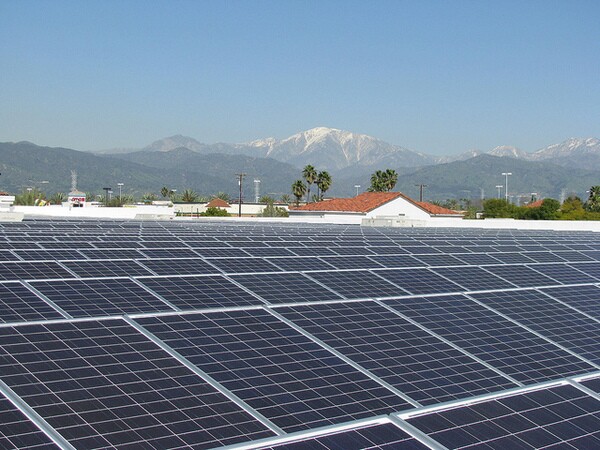Solar Helping Keep California Cool During This Heatwave

The agency that operates the electrical power grid for most of California forecasted last week that the state was in good shape for the summer, even without the San Onofre nuclear power plant and with drought making significantly lower output from hydroelectric stations. This week seems to be underscoring that confidence.
Warm temperatures mean greater demand for power in California as people reach for their air conditioning, and the California Independent System Operator (CaISO) is charged with making sure there's enough electrical power to meet that heightened demand. This year, the state's record drought means the prospects for hydro power in the state are well below average, and Southern California's grid still struggles to make up the more than two gigawatts of supply lost when the San Onofre Nuclear Generating Station went offline.
But if CaISO's grid stats for Wednesday afternoon are any indication, last week's forecast wasn't far from the mark. With a heat wave hitting much of the state and pushing statewide power demand toward an unseasonable 40,000 megawatts, the grid seems to have plenty of juice to spare -- and more than ten percent of the afternoon's demand is being met by solar.
At this writing, at 1:45 pm, the CaISO gridis experiencing a demand of 36,699 megawatts, with a peak of 38,348 megawatts forecast for around 5:00 p.m. Renewable energy is providing 6,919 megawatts of that demand, or close to 19 percent of the total, with utility-scale solar output -- which has grown significantly in the last couple weeks -- at 4,227 megawatts. That's close to three times utility-scale solar's peak output for the state a year ago Wednesday, and it's down from what would seem to be near-record output of more than 4,400 megawatts of solar earlier in the day.
That's more than twice the output of San Onofre, for those of you doing the math. And as always with CaISO's stats, it doesn't include solar panels on your rooftop or elsewhere on the user's side of the electric meter. Instead, those solar panels lower the peak demand, which might be well above 40K megawatts if not for property owners generting their own power on site.
As summer progresses, the state's peak demand will grow well past the 40,000 megawatts we're looking at for this week, likely approaching 60,000 megawatts during our usual August hot spells. CaISO announced last week that it will be paying very close attention to conditions in the area once served by San Onofre, especially in Southern Orange and San Diego counties. CaISO staff reminded power consumers that we may well be called upon to conserve power during the grid operator's "Flex Alerts."
"We know it is an inconvenience, but if the ISO issues a Flex Alert asking for conservation it is because the grid is under a lot of stress and we need to immediately reduce power demand," said ISO President and CEO Steve Berberich in a press release. "Voluntary conservation is better than people losing power when demand outstrips supply."
You can find out more about Flex Alerts at the CaISO website, and sign up to receive those alerts via smartphone app, email, or other social media.
Still, even in an unseasonably warm spring, renewable energy can keep the grid humming. Two San Onofres' worth of solar power? That's impressive.


